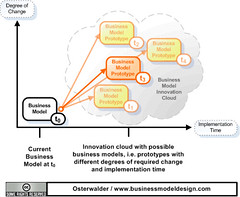The key for small business success is cash flow which needs planned and managed. A budget is a useful tool. It is a written financial plan that helps you set goals and measure progress. A properly structured budget model will also let you do what if scenario analysis to see the impact on your cash flow and help to secure financing.
Here are 10 Tips for creating your budget:
1)
What do you expect to sell? Start by coming up with a sales revenue target. This is driven by multiplying your units and price for your key products and services. This will allow you to test the impact of rate and volume variances. Your first year needs to be monthly so that you can check monthly cash flow needs. You also need to consider how your prices compare to the market to understand any pricing pressures you need to evaluate.
2) What's it costing you to produce the goods/services you sell? If you're buying finished items for resale, this is relatively easy. It's trickier when your produce items since you have to calculate all the factors, such as labor and material, which go into manufacturing a product. This needs accuracy for your model to work properly. The cost per unit needs to match the units you are using to drive sales.
The difference between your Revenues and Cost of Goods is Gross Profit. Dividing the Gross Profit by Revenues gives you a Gross Profit Margin percent. If your Gross Profit Margin percent is staying flat or trending upward, you're probably on track in terms of adjusting your prices to show changes in what you pay for what you sell or produce. Seeding a declining margin over time gives you a heads-up that you must adjust your prices or check your cost structure.
3) What's it costing you to sell what you sell and operate? Advertising, marketing, labor commission, storage and general and administrative overhead. Some of these costs will be variable with sales and some will be fixed within a sales volume range.
4)
What are the financing costs? You need to include interest expense on all forms of debt including any credit card or accounts receivable financing. This expense will normally be a function of the amount being financed.
5)
How much Inventory do you Need? Inventory levels are very important to manage. It should be a reason of your forecast sales. Too much inventory and you are using up cash unnecessarily and too little, you may have lost sales. Managing your supply chain is critical to having proper and timely inventory levels. Retail businesses will have finished goods as their major inventory while manufacturing and construction businesses will have to factor in raw materials and unfinished inventory.
6)
What are your Accounts Receivable? Managing Accounts Receivable is critical to the cash flow lifeblood of a small business. You need to understand how long it is taking for your customers to pay and develop ways to improve it if it is hurting your business. There is where having a real credit and collections policy is important and you need to track delinquent accounts. For big-ticket items that have a long lead time, you may need to consider an upfront deposit
7)
What are your other assets? In addition to accounts receivable and inventory, you have cash balances and property, plant, and equipment to forecast. You also need to reduce the balance for accumulated depreciation and depreciation expense. Don't forget to consider the age of your equipment if you need to replace it during the forecast period. If your capital spending is a function of growth you need to have it as a function of your sales growth and don't forget about the lead time to get it installed.
8)
What are your liabilities? This represents who you owe including payroll taxes and current debt payments. This would also include credit cards. Accounts payable is important to manage. Pay too quickly and you are using up cash and pay too slow it could hurt your businesses credit rating. This should be a factor of your monthly expense forecast and capital spending. When you make debt payments you want to be sure to separate the interest as an expense and the principal portion as a reduction in the balance.
9)
What is your debt to asset ratio? This measures debt as a percent of total assets. If this ratio keeps increasing, your business becomes more riskier. You need to include debt repayments on existing debt as well as new debt.
10)
What is your cash Flow? This is the bottom line of what you need to see. The following is the formula for cash flow:
Net Income
+ Depreciation
- Change in Current Assets
+ Change in Current Liabilities
-Capital Spending
+ Change in Debt
= Cash Flow
Conclusion
Although tracking the big 10 budget tips and knowing what's up with your cash flow is essential to knowing and running your business, don't be afraid to turn to professionals for help. It needs to be done right.
 Image via Wikipedia
Image via Wikipedia































